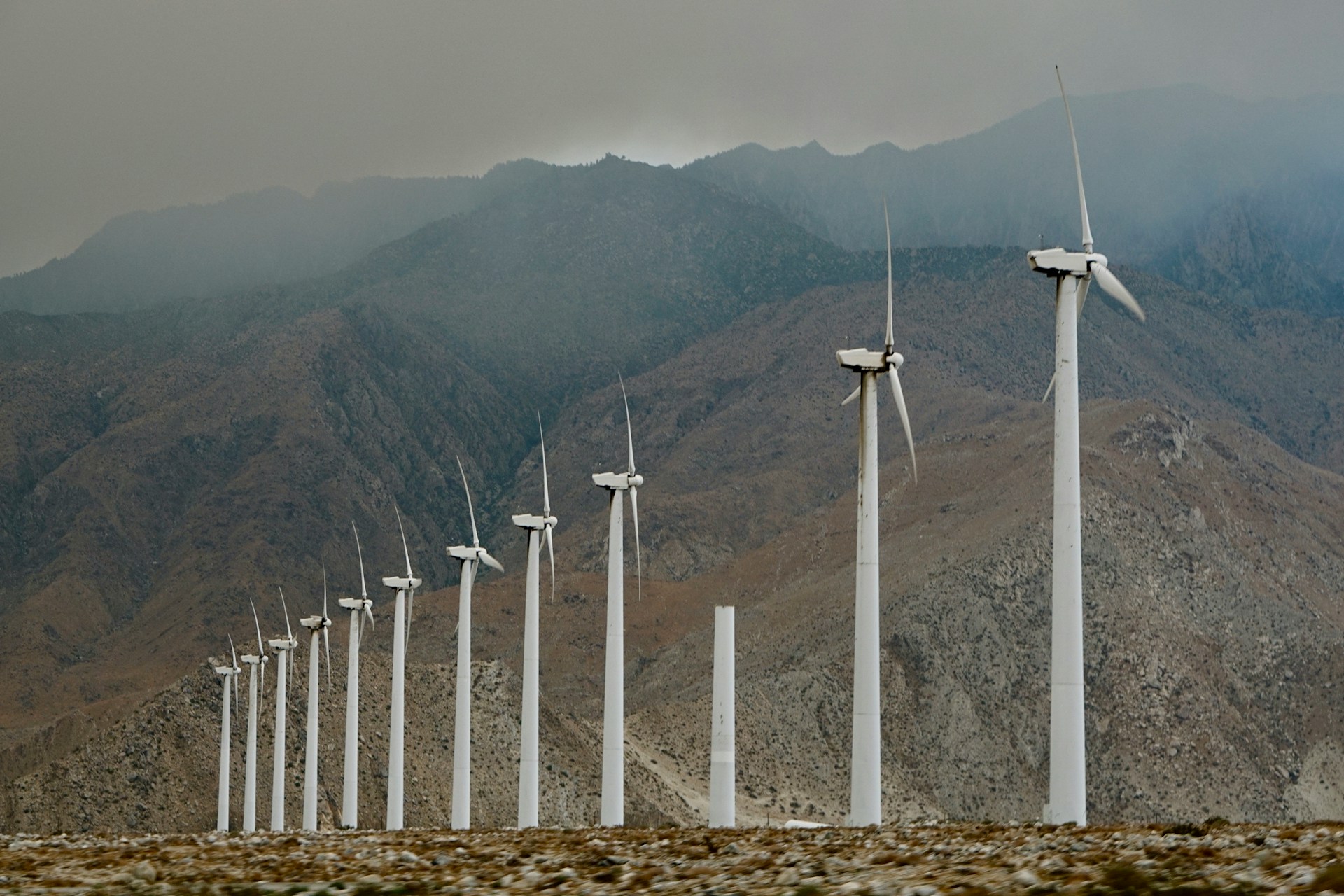



Revolutionized is reader-supported. When you buy through links on our site, we may earn an affiliate commision. Learn more here.
Throughout history, humans have relied on the wind to power critical processes like moving grain mills and pushing vessels across the seas. By the 19th century, scientists had developed the first turbines to convert this perpetual resource into electric energy.
You’ve probably seen them in action — giant fans with massive blades gently rotating to generate electricity. Today, this innovation is the key to unlocking renewable energy to achieve worldwide climate neutrality. But how do wind turbines generate electricity, exactly?
Learn how a simple scientific principle combines with advanced technology to transform this freely available resource into clean power.
Wind turbines leverage the aerodynamics of their rotor blades to capture the wind’s kinetic energy and convert it into mechanical energy, which powers a generator that produces electricity. These machines can be stand-alone, supplying a single or very few buildings, or aggregated to form wind farms that can power a city.
Size is a critical factor in determining the system’s output. As the demand for cleaner energy increased through the years, turbines have become larger with wider rotor diameters. According to the Department of Energy, utility-scale wind turbines in 2022 reached a hub height of 322 feet — taller than the Statue of Liberty.
As the wind blows, the air pressure variance across the blade’s two sides creates lift and drag, causing the rotor mechanism to rotate. On bigger turbines, the blades spin at 8 to 20 revolutions per minute (rpm), depending on the wind speed.
The rotor connects to the generator through a shaft and gearbox system, which speeds up the rotation to about 1800 rpm to create electromagnetic fields and include an electric current in the wires.
The electricity generated by the turbine is transmitted through cables within the tower and then sent out through power lines to homes and businesses via the electrical grid.
It’s not uncommon to drive past a wind farm and see the turbine blades rotating without wind. There are several possible reasons for this.
First, technological advancements have enhanced the sensitivity of modern blades to the slightest presence of wind. So, even if it’s apparently not windy, gentle breezes can still move the rotor.
Second, wind speed increases the higher up it blows. There might be no wind on the ground but plentiful above it, which could spin the blades and automatically adjust the angle at which they face the air current. Lastly, turbines can keep rotating for prolonged periods after the wind dies.
To be clear though — just because the blades are spinning without wind doesn’t mean the turbine is generating electricity. These systems operate within a predefined minimum speed threshold called the ‘cut-in-speed.’ The average cut-in speed is 8 meters per second for most large turbines.
Conversely, the turbine automatically pauses operations when it hits the cut-out speed during extreme wind. This system protects the machinery from damage during inclement weather and is also essential for safety reasons.
Wind turbines in the U.S. generally fall into two basic types:
The U.S. Geological Survey estimates the average turbine can produce over 843,000 kWh monthly. That’s enough electricity to supply more than 940 U.S. homes. Even more impressive is the generation speed — a single machine can generate the typical household power requirements for a month in just 46 minutes.
With 74,511 turbines listed in the official database as of June 2024, the potential for a nationwide transition to renewable wind energy is immense. However, progress has been slow, bogged down by inherent inefficiencies and technology limitations of this age. The biggest factors affecting wind turbine efficiency include:
Sustainable storage remains one of the most profound roadblocks to the widespread adoption of clean energy sources.
Many countries have progressed so far in their renewables agenda that their systems produce more energy than existing infrastructures can handle. In 2022, the UK wasted 1.35 Terawatt-hours of electricity within four months because it didn’t have enough storage.
Innovative solutions to this issue continue to emerge worldwide. Electrochemical batteries, pumped hydropower, flywheels and hydrogen electrolysis represent some of the most promising technologies with growing commercial applications. These renewable energy storage systems will facilitate sustainable electricity supply for a carbon-free future.
Wind electricity generation has grown significantly in the last 30 years and will likely continue over the next few decades. Technological advances have decreased production costs, increasing accessibility on a broader scale.
According to the Energy Information Administration, wind sources generated 425 Billion kWh in 2023, accounting for 10.2% of the total grid output. Evolving consumer preferences, fueled by increased awareness about the value of renewables and favorable policies to encourage adoption, will drive the next round of industry growth.
Infrastructure development will also play a vital role in this transition. President Biden recently unveiled plans to deploy an impressive 30-gigawatt wind farm capable of powering 10 million American homes by 2030. This project will also create thousands of jobs and reduce up to 78 million metric tons of carbon emissions from the energy industry.
The process is nuanced, much like any energy-producing technology. As the industry evolves and renewable storage systems become mainstream, wind-generated electricity adoption will happen more rapidly, fast-tracking the transition to a sustainable future.
Revolutionized is reader-supported. When you buy through links on our site, we may earn an affiliate commision. Learn more here.


This site uses Akismet to reduce spam. Learn how your comment data is processed.